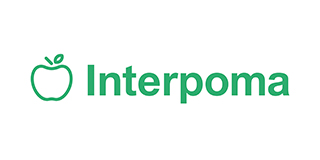

Interpoma
Services
Passive MAP improved storage for spinach, asparagus and broccoli, which could be a useful tool for extending the storage of produce in non-optimum temperature
Access to cold storage is limited for vegetable growers in Kansas and survey data indicates that 32% have access to cooling facilities with 6% having access to refrigerated trucks. This is a significant barrier for vegetable growers that wish to access wholesale markets. Modified Atmosphere Packaging (MAP) is a technique that could supplement, or even substitute refrigeration. The objective of this project was to investigate the effects of passive MAP and washing with ozonated water on the quality, safety and storage life of vegetables stored at non-optimum temperatures. Spinach, asparagus, and broccoli were purchased from local farms and six treatments were evaluated:
01 September, 2017
Access to cold storage is limited for vegetable growers in Kansas and survey data indicates that 32% have access to cooling facilities with 6% having access to refrigerated trucks. This is a significant barrier for vegetable growers that wish to access wholesale markets. Modified Atmosphere Packaging (MAP) is a technique that could supplement, or even substitute refrigeration.? The objective of this project was to investigate the effects of passive MAP and washing with ozonated water on the quality, safety and storage life of vegetables stored at non-optimum temperatures.? Spinach, asparagus, and broccoli were purchased from local farms and six treatments were evaluated:? - unwashed produce in open produce bag (OPB) (CC) and in MAP bags (CM);? - washed in cold water (4?C) in OPB (WC) and in MAP bags (WM);? - washed in ozonated water (1.0-1.5 ppm, 1 min) in OPB (OC) and in MAP bags (OM).? Samples were stored at 13?C and 85% RH. CO2 and O2 concentrations were monitored daily. Every 3 days, subjective and objective quality as well as associated microbial community was evaluated.? MAP bags equilibrated an atmosphere of 7% CO2 and 6% O2, 4% CO2 and 7% O2 and 12% CO2 and 3% O2 for spinach, asparagus and broccoli, respectively.? Yellowing of spinach leaves was less pronounced on WC than CC.? In asparagus, OC presented lower visual decay and less wilting than CC.? In broccoli, the groups that was stored in MAP bags retained green color after 14 days, while CC was turned yellow after 5 days.? Treatments had no effect on microbial communities.? The utilization of?passive MAP improved storage life by 9, 4 and 8 days for spinach, asparagus and broccoli, respectively, which could be a useful tool for extending the storage of produce in non-optimum temperatures. Sources Postharvest treatments to improve quality and safety of locally-grown vegetables stored at non-optimum temperatures Helena P. Chiebao1, Jacob R. Jenott2, Daniel A. Unruh2, Sara E. Gragg2, Cary L. Rivard1, Eleni Pliakoni1 1 22201 W. Innovation Dr., Horticulture, Forestry and Rec. Resources, Kansas State University, Olathe KS 66061, United States of America 2 22201 W. Innovation Dr., Animal Science and Industry, Kansas State University, Olathe, KS 66061, United States of America VIII International Postharvest Symposium; Cartagena, Spain, 21-24 June 2016 Picture: Spinach by AliExpress, http://es.aliexpress.com/cheap/cheap-spinach-salad.html












